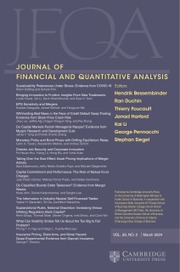No CrossRef data available.
Article contents
Discussion: The Theory of Housing and Interest Rates
Published online by Cambridge University Press: 06 April 2009
Extract
Professors Kau and Keenen (K & K) explore in this paper the microeconomic foundations of the demand and supply of housing. In order to investigate these foundations, K & K adopt the standard neoclassical framework: the demand for housing arises from solution of a multiperiod consumption problem; and, the supply of new housing is derived from a one–period profit maximization problem. Within this general framework, K & K argue that owner–occupied housing is distinguished from other consumption goods by its durability. As a consequence of this durability, the stock of housing held enters into each period's budget constraint. The utility, on the other hand, from housing enters only as a flow of services in each time period. Because of the stock/flow nature of housing, the comparative statics of the model become interesting. K & K investigate the comparative statics of the model with special attention focused on the impact of changes in the real rate of interest. K & K show, by use of fairly elegant duality theory, that if consumers of owner–occupied housing are net debtors, then an increase in the real rate of interest leads to a fall in the immediate demand for housing. This result is as it should be, since an increase in the real rate of interest reduces the wealth of net borrowers for any given level of future income and, consequently, demand for normal goods falls. K & K argue that a similar net debtor condition must hold to produce the same result in the rental market. I am sure this is a stronger condition than is necessary since an increase in the real rate of interest lowers the price of future consumption and to the extent that current consumptions of rental housing are a substitute for future consumption, it would be expected that current demand for rental housing would fall.
- Type
- Competitive Paper Winners
- Information
- Journal of Financial and Quantitative Analysis , Volume 15 , Issue 4 , November 1980 , pp. 849 - 850
- Copyright
- Copyright © School of Business Administration, University of Washington 1980




